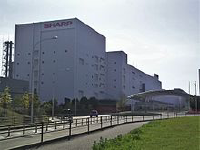Company Analysis tripla Co., Ltd.
1. Summary
Advantages
- Price (2653 ¥) is less than fair price (5076.67 ¥)
- The stock's return over the last year (84.75%) is higher than the sector average (0%).
- The company's current efficiency (ROE=19.8%) is higher than the sector average (ROE=13.11%)
Disadvantages
- Dividends (0%) are below the sector average (30.47%).
- Current debt level 11.36% has increased over 5 years from 0%.
Similar companies
2. Share price and performance
2.1. Share price
2.3. Market efficiency
| tripla Co., Ltd. | Technology | Index | |
|---|---|---|---|
| 7 days | -1.4% | 26.5% | 6.1% |
| 90 days | 21.7% | 39.1% | 13.5% |
| 1 year | 84.7% | 0% | 18.7% |
5136 vs Sector: tripla Co., Ltd. has outperformed the "Technology" sector by 84.75% over the past year.
5136 vs Market: tripla Co., Ltd. has outperformed the market by 66% over the past year.
Stable price: 5136 is not significantly more volatile than the rest of the market on "Tokyo Stock Exchange" over the last 3 months, with typical variations of +/- 5% per week.
Long period: 5136 with weekly volatility of 1.63% over the past year.
3. Summary of the report
4. Fundamental Analysis
4.1. Stock price and price forecast
Below fair price: The current price (2653 ¥) is lower than the fair price (5076.67 ¥).
Price significantly below the fair price: The current price (2653 ¥) is 91.4% lower than the fair price.
4.2. P/E
P/E vs Sector: The company's P/E (34.51) is lower than that of the sector as a whole (275.32).
P/E vs Market: The company's P/E (34.51) is lower than that of the market as a whole (150.15).
4.2.1 P/E Similar companies
4.3. P/BV
P/BV vs Sector: The company's P/BV (6.55) is lower than that of the sector as a whole (207.7).
P/BV vs Market: The company's P/BV (6.55) is lower than that of the market as a whole (120.08).
4.3.1 P/BV Similar companies
4.4. P/S
P/S vs Sector: The company's P/S indicator (3.87) is lower than that of the sector as a whole (206.86).
P/S vs Market: The company's P/S indicator (3.87) is lower than that of the market as a whole (120.98).
4.4.1 P/S Similar companies
4.5. EV/Ebitda
EV/Ebitda vs Sector: The company's EV/Ebitda (-3.91) is lower than that of the sector as a whole (214.9).
EV/Ebitda vs Market: The company's EV/Ebitda (-3.91) is lower than that of the market as a whole (120.75).
5. Profitability
5.1. Profitability and revenue
5.2. Earnings per share - EPS
5.3. Past profitability Net Income
Yield Trend: Negative and has fallen by -2016.05% over the last 5 years.
Accelerating profitability: The return for the last year (0%) exceeds the average return for 5 years (-2016.05%).
Profitability vs Sector: The return for the last year (0%) exceeds the return for the sector (-2.62%).
5.4. ROE
ROE vs Sector: The company's ROE (19.8%) is higher than that of the sector as a whole (13.11%).
ROE vs Market: The company's ROE (19.8%) is higher than that of the market as a whole (9.39%).
5.5. ROA
ROA vs Sector: The company's ROA (2.5%) is lower than that of the sector as a whole (5.61%).
ROA vs Market: The company's ROA (2.5%) is lower than that of the market as a whole (4.46%).
5.6. ROIC
ROIC vs Sector: The company's ROIC (0%) is lower than that of the sector as a whole (12.15%).
ROIC vs Market: The company's ROIC (0%) is lower than that of the market as a whole (8.83%).
7. Dividends
7.1. Dividend yield vs Market
Low yield: The dividend yield of the company 0% is below the average for the sector '30.47%.
7.2. Stability and increase in payments
Unstable dividends: The company's dividend yield 0% has not been consistently paid over the past 7 years, DSI=0.
Weak dividend growth: The company's dividend yield 0% has been growing weakly or stagnant over the past 5 years. Growth over only 0 years.
7.3. Payout percentage
Dividend Coverage: Current payments from income (0%) are at an uncomfortable level.
Pay for your subscription
More functionality and data for company and portfolio analysis is available by subscription
 MAX Chat
MAX Chat

